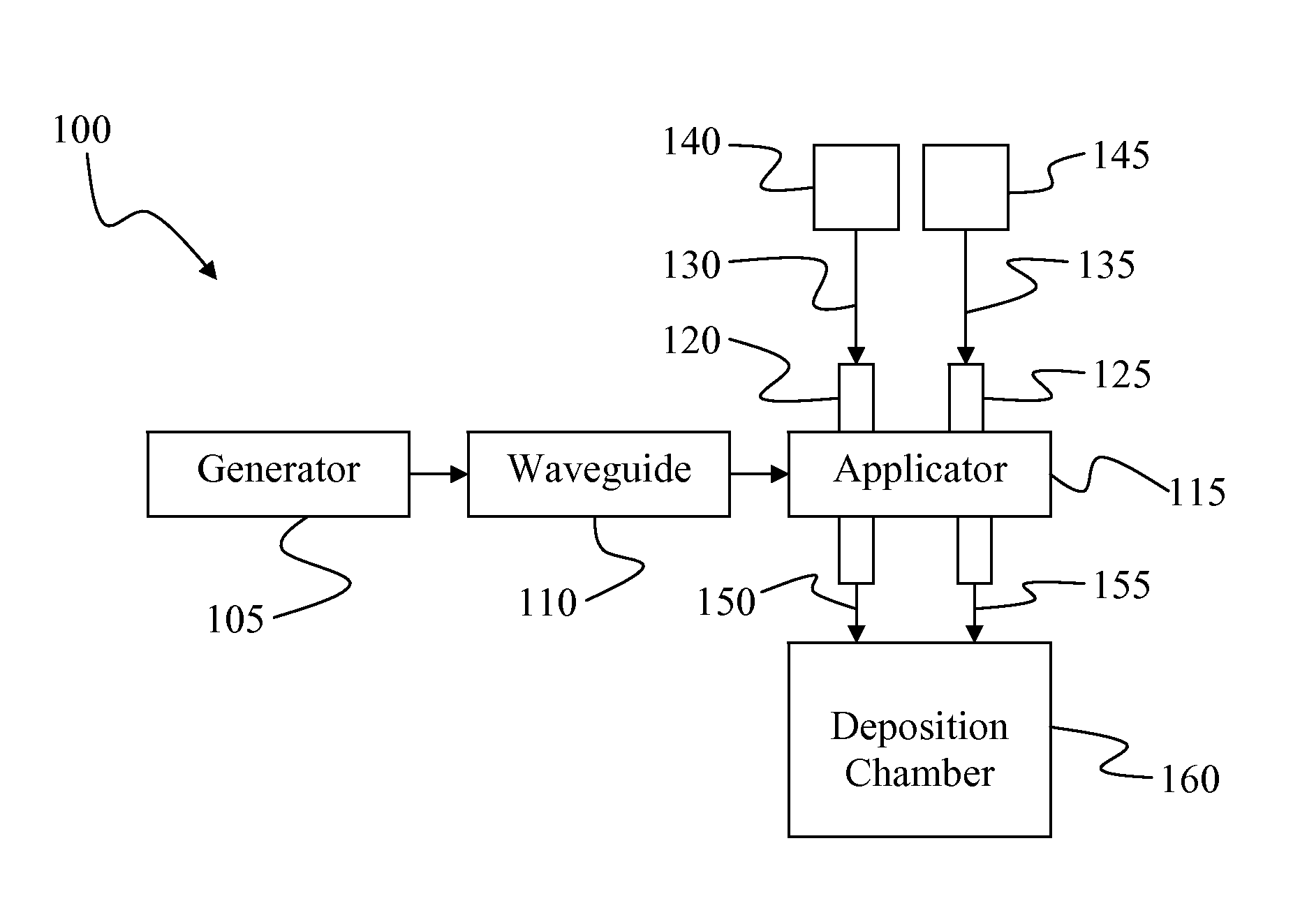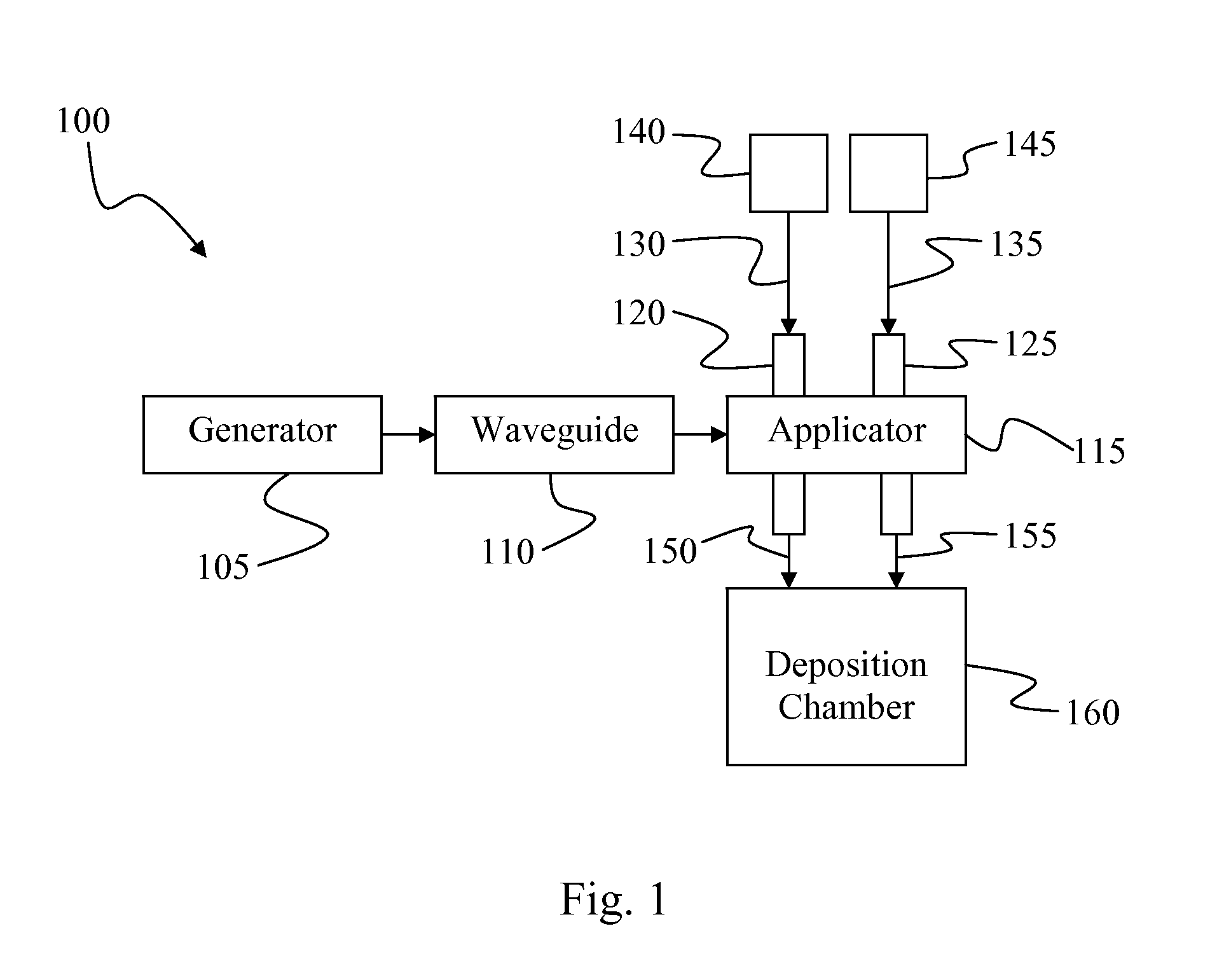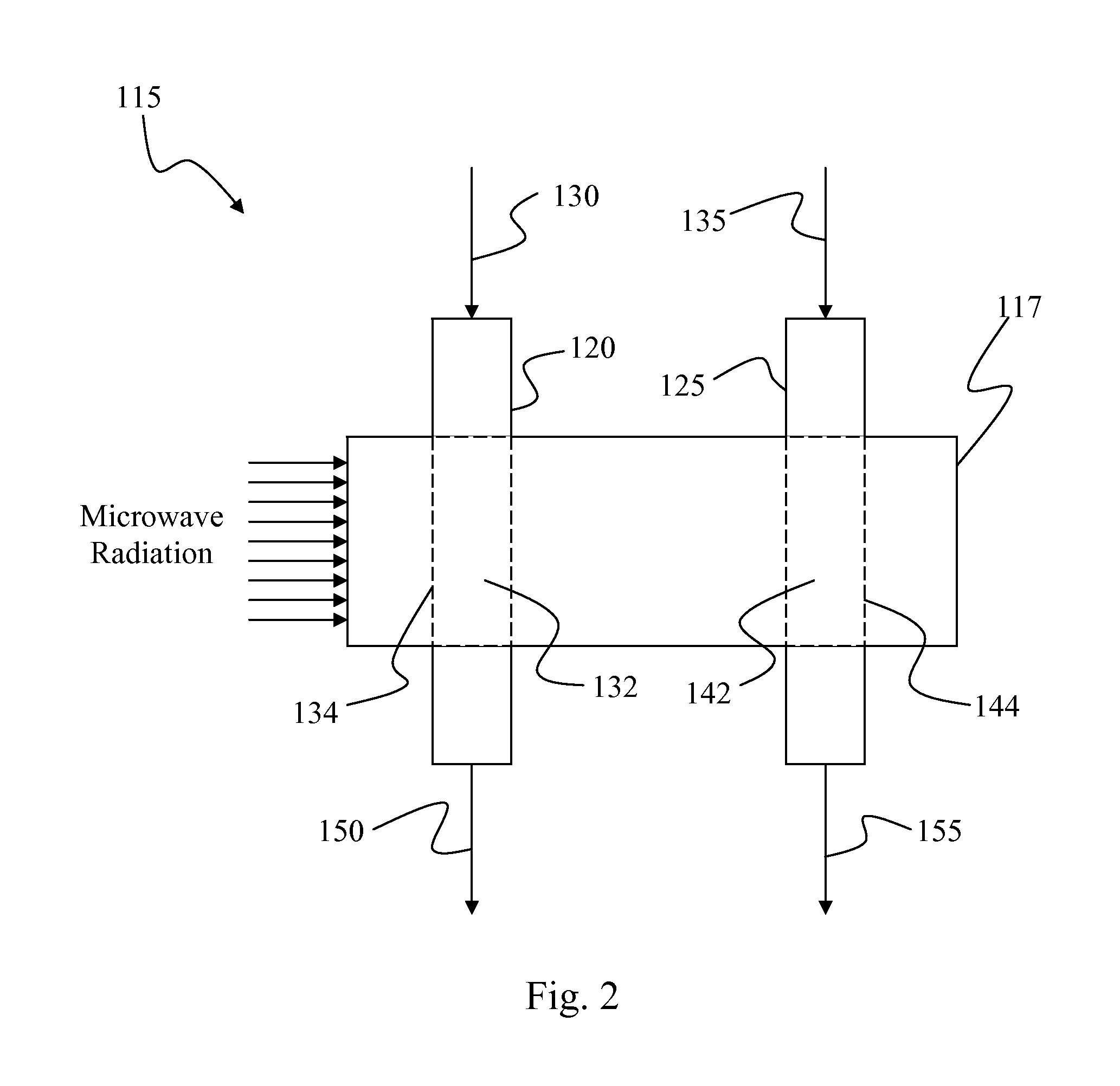Plasma Deposition of Amorphous Semiconductors at Microwave Frequencies
a technology of amorphous semiconductors and microwave frequencies, applied in the field of plasma chemistry and physics, can solve the problems of preventing or slowing down the relaxation or decay of solar energy on a scale sufficient to meaningfully reduce fossil fuel consumption, and achieve the effects of maximizing the concentration of fluorine, preventing or slowing down the relaxation or decay, and increasing the porosity of product films
- Summary
- Abstract
- Description
- Claims
- Application Information
AI Technical Summary
Benefits of technology
Problems solved by technology
Method used
Image
Examples
example 1
[0084]In this example, selected compositional and optical absorption characteristics of representative thin film materials comprising amorphous silicon in accordance with the instant invention are described. The materials are denominated Sample 547 and Sample 548 and were prepared in a deposition system similar to that shown in FIG. 4 that included a single microwave applicator with a single conduit passing therethrough and a single supplemental inlet for delivering a non-energized supplemental material stream. The conduit was made from sapphire and the substrate was positioned about 4 inches from the interface of the conduit with the deposition chamber. A mixture of 1 standard liter per minute of SiF4 and 2 standard liters per minute of argon was introduced to the conduit of the microwave applicator and activated with microwave radiation at a frequency of 2.45 GHz and a power of 600 W. SiH4 was introduced at a rate of 1 standard liter per minute to the deposition chamber through th...
example 2
[0099]In this example, the effect of process gas ratio on the deposition rate and photoconductivity of representative materials comprising amorphous silicon in accordance with the instant invention is described. The samples were prepared using the deposition system described in Example 1 hereinabove. A mixture of 1 standard liter per minute of SiF4 and 2 standard liters per minute of argon was introduced to the conduit of the microwave applicator and activated with microwave radiation at a frequency of 2.45 GHz and a power of 600 W. Instead of SiH4, however, disilane (Si2H6) was introduced to the deposition chamber through the supplemental delivery port and delivered as an electrically-neutral material stream. The flow rate of disilane was systematically adjusted to provide a series of samples for which the ratio of the flow rate of disilane to the ratio of the flow rate of SiF4 ranged from 0.3 to 2.0. The energized stream of SiF4 and argon exiting the conduit of the microwave appli...
example 3
[0104]In this example, the effect of substrate temperature on the deposition rate and photoconductivity of representative materials comprising amorphous silicon in accordance with the instant invention is described. The samples were prepared using the deposition system described in Example 1 hereinabove. A mixture of 1 standard liter per minute of SiF4 and 2 standard liters per minute of argon was introduced to the conduit of the microwave applicator and activated with microwave radiation at a frequency of 2.45 GHz and a power of 600 W. Instead of SiH4, however, disilane (Si2H6) was introduced at a rate of 1 standard liter per minute to the deposition chamber through the supplemental delivery port. The disilane was delivered in an electrically-neutral state. The Si2H6 / SiF4 flow rate ratio was fixed at 1.0 in these experiments. The energized stream of SiF4 and argon exiting the conduit of the microwave applicator and the non-energized stream of disilane supplied by the supplemental d...
PUM
| Property | Measurement | Unit |
|---|---|---|
| Power | aaaaa | aaaaa |
| Concentration | aaaaa | aaaaa |
| Energy | aaaaa | aaaaa |
Abstract
Description
Claims
Application Information
 Login to View More
Login to View More - R&D
- Intellectual Property
- Life Sciences
- Materials
- Tech Scout
- Unparalleled Data Quality
- Higher Quality Content
- 60% Fewer Hallucinations
Browse by: Latest US Patents, China's latest patents, Technical Efficacy Thesaurus, Application Domain, Technology Topic, Popular Technical Reports.
© 2025 PatSnap. All rights reserved.Legal|Privacy policy|Modern Slavery Act Transparency Statement|Sitemap|About US| Contact US: help@patsnap.com



